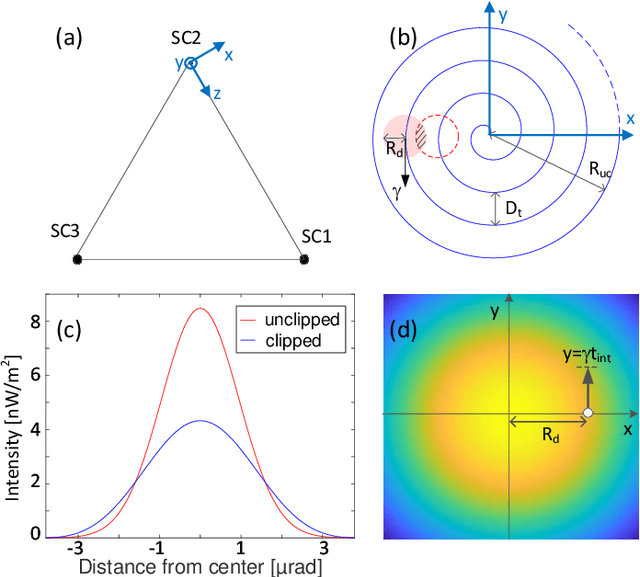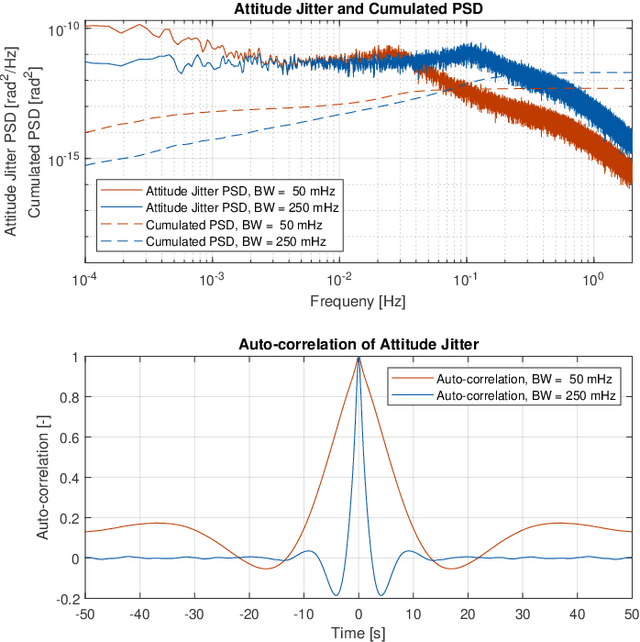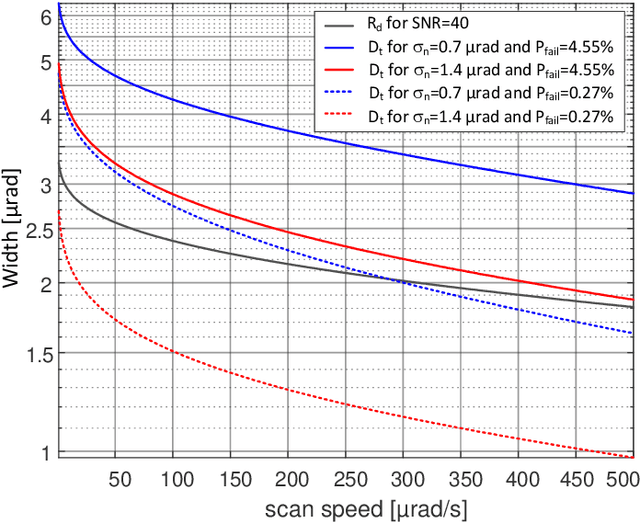Gerald Hechenblaikner
Optical link acquisition for the LISA mission with in-field pointing architecture
Feb 23, 2023



Abstract:We present a comprehensive simulation of the spatial acquisition of optical links for the LISA mission in the in-field pointing architecture, where a fast pointing mirror is used to move the field-of-view of the optical transceiver, which was studied as an alternative scheme to the baselined telescope pointing architecture. The simulation includes a representative model of the far-field intensity distribution and the beam detection process using a realistic detector model, and a model of the expected platform jitter for two alternative control modes with different associated jitter spectra. For optimally adjusted detector settings and accounting for the actual far-field beam profile, we investigate the dependency of acquisition performance on the jitter spectrum and the track-width of the search spiral, while scan speed and detector integration time are varied over several orders of magnitude. Results show a strong dependency of the probability for acquisition failure on the width of the auto-correlation function of the jitter spectrum, which we compare to predictions of analytical models. Depending on the choice of scan speed, three different regimes may be entered which differ in failure probability by several orders of magnitude. We then use these results to optimize the acquisition architecture for the given jitter spectra with respect to failure rate and overall duration, concluding that the full constellation could be acquired on average in less than one minute. Our method and findings can be applied to any other space mission using a fine-steering mirror for link acquisition.
* 10 pages, 7 figures, two columns
Probabilistic model for spatially acquiring optical links in space under influence of band-limited beam jitter
Feb 18, 2023Abstract:An analytical model is derived for the probability of failure (P-fail) to spatially acquire an optical link with a jittering search beam. The analytical model accounts for an arbitrary jitter spectrum and considers the associated correlations between jitter excursions on adjacent tracks of the search spiral. An expression of P-fail in terms of basic transcendental functions is found by linearizing the exact analytical model with respect to the correlation strength. Predictions from the models indicate a strong decrease of P-fail with increasing correlation-strength, which is found to be in excellent agreement to results from Monte Carlo simulations. The dependency of P-fail on track-width and scan speed is investigated, confirming previous assumptions on the impact of correlations. Expressions and applicable constraints are derived for the limits of full and no correlations, and the optimal track width to minimize the acquisition time is computed for a range of scan speeds. The model is applicable to optical terminals equipped with a fast beam steering mirror, as often found for optical communication missions in space.
* 9 pages, 6 figures, 2 columns
 Add to Chrome
Add to Chrome Add to Firefox
Add to Firefox Add to Edge
Add to Edge